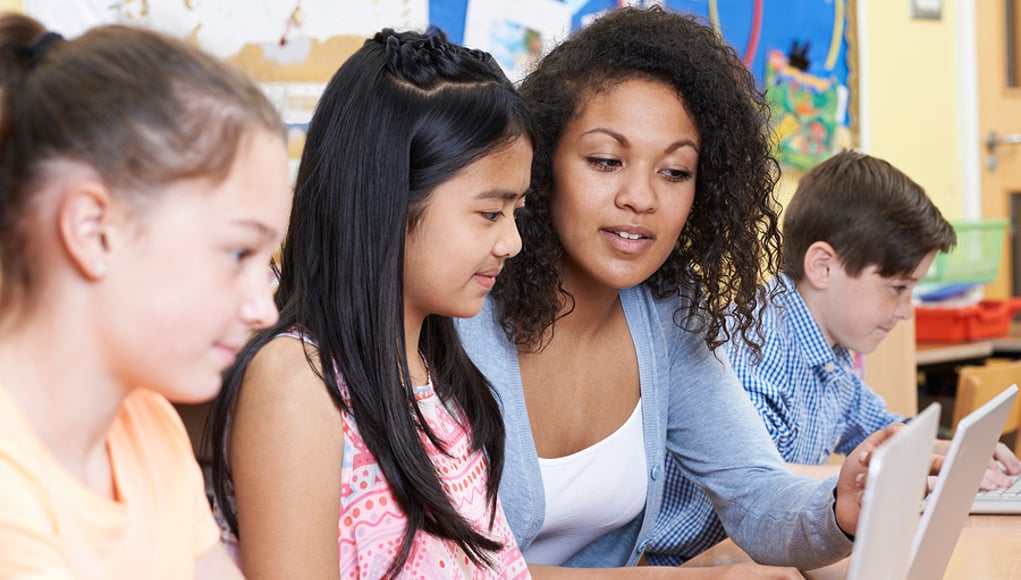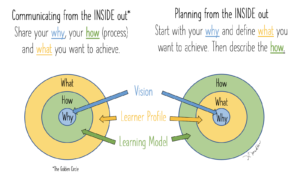Relationships at the Heart of Learning

By: Dr. Lorea Martinez Perez, PhD
One of my first teaching assignments was in a public school in Barcelona. There was one particular student who kept me up at night. He had tried to jump out of a moving car two years earlier and was receiving counseling from a therapist outside of school. It was difficult for me to predict his behavior in class; he could go from engaged and cooperative to defiant in seconds. The other students were always watching to see how I would respond to his behavior. It was stressful!
Despite how difficult it was to deal with his outbursts, I tried to find small moments where we could relate to each other, sometimes over a soccer game, a TV series, or even a math problem. My strategy with him was to keep a personal connection, which paid off over time. Although the student continued to display challenging behaviors, his outbursts decreased.
Although I did not know it at the time, my experience illustrates a key finding from the science of learning and development: children’s relationships with adults are an essential ingredient for learning and healthy development. The quality of teacher-student relationships has been repeatedly linked with students’ academic, social and emotional outcomes.
Effective teachers cultivate positive relationships with students every day. They foster emotional connections with and among students, and create an environment where students feel physically and emotionally safe, and have a sense of belonging and trust.
Creating this environment requires that educators pay attention to the emotions that students experience inside and outside the classroom, and how these feelings impact their behaviors and readiness for learning. Let me explain why:
• Emotions drive our attention; they influence our ability to process information and understand what we encounter. They can energize our thinking or distract us from our goals.
• Emotions are not add-ons, distinct from cognitive skills. Cognition and emotion are supported by interdependent neural processes: you cannot have thoughts without feeling, and vice versa.
• Emotions involve automatic mental and physical reactions to different situations. However, not everybody reacts the same way. Some students are more reactive—or react differently—than others.
• Students’ trauma and recurrent stress due to individual or social issues, such as racism, injustice, and discrimination impact their ability to express and regulate emotions.
• Fear and stress are not helpful emotions when it comes to learning. When we are scared, our amygdala activates, sending emergency signals to our brain and body so we can protect ourselves from danger. Fear also makes our thinking more rigid and shuts down the brain for exploration. Prolonged stressful situations impair our ability to learn and to maintain physical health.
• Curiosity is a better emotion for meaningful learning. It fuels imagination and creativity. When students feel curious, they are open and may be willing to explore new possibilities.
Research in the field of neuroscience has demonstrated that emotions affect learning. When teachers are familiar with the critical role that emotions play in learning, they can use this knowledge to design educational experiences that incorporate emotions into teaching and learning, instead of asking students to ignore or suppress their feelings. These emotional connections create pathways for positive and equitable relationships that consider students’ lived experiences and the diverse contexts that students need to navigate. Here are a few ideas to get you started:
• Give students choices. When students are involved in making decisions, they will likely be more emotionally invested in and attached to the learning outcomes. Teachers know that choice, when provided in a structured manner, can motivate students and instill a sense of ownership over the learning process.
• Help students relate the materials discussed in class to their life and personal interests. When students engage with academic material in a meaningful way, they will be able to pay more attention and focus for longer periods of time.
• Get to know your students. Ask students about different aspects of their lives, so you can connect their interests and goals to the materials discussed in the classroom. This is also an opportunity for students to build their self-awareness.
• Create opportunities to solve open-ended problems. Highly prescriptive activities are emotionally impoverished; that is to say, they don’t allow students to establish emotional connections that are important for cognitive learning and decision-making. Use teaching strategies that allow students to wrestle with problems that don’t have a right/wrong solution.
• Offer a variety of tasks and activities and combine both achievement and performance tasks, so students can feel successful during class. Building self-confidence in your students is key to promoting joy for learning and avoiding achievement anxiety.
• Build in regular check-ins with students (beginning, during and/or at the end of day/class). These can take the form of a classroom meeting but could also be a silent activity where students quickly share or write how they are feeling. Consider using this check-in time to ask for feedback about lessons, classroom routines or particular projects students are developing.
• Create space and time in the classroom to refocus. This can be a calming corner (where students go to regulate their emotions and get ready to reengage) or it can be scheduled quiet time, which provides students with a regular quiet and peaceful space to take a breath or do the sustained reading.
Educators have the potential to create safe and supportive learning environments that incorporate what we know about the role of emotions in learning. We start by considering that emotions drive out attention and behavior, and are vehicles for meaningful learning.
For more, see:
- Prioritize Building Relationships With Your Students: What Science Says
- Tom Vander Ark on Difference Making and Schools Alive With Possibility
Dr. Lorea Martínez Pérez is the award-winning Founder of HEART in Mind Consulting, a company dedicated to helping schools and organizations integrate social-emotional learning in their practices, products, and learning communities and author of Teaching with the HEART in Mind.
Stay in-the-know with innovations in learning by signing up for the weekly Smart Update.







Admission Hunters
Absolutely right! as a teacher we should always keep it in our mind that supportive learning environments and emotional touch always helps the students to grow their mind and personality as well. Also, colleges, institutions, universities should come forward and make a program to encourage the teachers and their staffs so that they can provide their students emotional and supportive learning.